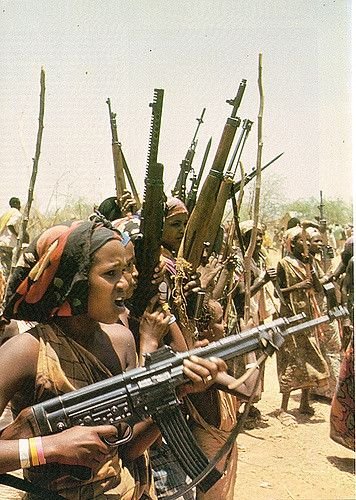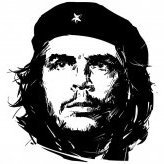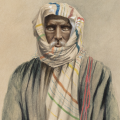-
Content Count
122 -
Joined
-
Last visited
Posts posted by cubano
-
-
WSLF was an inactive insurgency in 1991.
I have CIA links that prove WSLF was insignificant in 1986.
-
WSLF was destroyed by Ethiopia. This is a fact.
-
Insurgency in Ethnically Divided Authoritarian-led Societies: A Comparative Study of Rebel Movements in Ethiopia, 1974-2014
https://tspace.library.utoronto.ca/bitstream/1807/92088/3/Teshale_Semir_Y_201811_PhD_thesis.pdf
PAG 236
QuoteShut out of any possibility of extricating themselves from the Somali government’s iron fist, the SALF and the WSLF—once the most visible forces in eastern Ethiopia—were rendered obscure by the mid-1980s. Their demise—partly caused by excessive dependence on a power that radically changed its anti-Mengistu rhetoric and behavior after its defeat in a war with the military regime—illustrates the important lesson that autonomy is a crucial factor for the survival of a rebel group and the durability of its insurgency.
-
Why nobody speak about WSLF history in Ethiopia?
People should know more about this insurgency and its fate.
WSLF and SALF were crushed by Mengistu.
-
I think WSLF was crushed by Ethiopia in 1984.
Siad Barre resigned Ogaden in 1988.
-
Did Siad Barre resign Ogaden claims in 1988?
Was WSLF destroyed by Ethiopia?
-
This music reminds me Cuba. I want to visit Somalia and watch with my own eyes the glorious battlefields of 1977.
-
QuoteIts like ONLF accusing WSLF why they argued against Late Barre about the name, conduct of the 1977 war. Most Somalis think that is the point where the war was lost, before it started.
Somalia lost 1977 because cuban troops helpd Ethiopia. Most somalis accept this opinion.
-
I like this music.
Soviet Union and Cuba in Ogaden.
-
QuoteSomali Galbeed might be free. Every Somali around the country paid in blood for that to happen in 1977
Ogaden will never be free. I will travel to Ethiopia very soon.
You will see me near this monument in Addis Ababa.
https://en.wikipedia.org/wiki/Tiglachin_Monument#/media/File:Tiglachin_monument_(Addis_Ababa).jpg
-
QuoteSomali Galbeed freedom is near
This dream will never come true. If somalis try to attack Ethiopia, Cuban troops crush Somalia again.
-
 1
1
-
-
Cuba is finished . Your era is over with the soviet . just keep away from Africa affairs. Somalia Giant will come back again . Sooner or later . inshalla .
I dont see any somali giant now. Somalia lost 1977 war and nobody can change this fact.
-
You forget to add other Arab countries.
Soviet is dead now . Somalia will wake up again. Somalia ha nolato.
Cuban troops and Soviet aid destroyed Somalia soul in 1978.
If you invade Ethiopia again, Cuba crushes Somalia.
-
That land is what lots of Somalis of all walks died for in 1977 war. Don't piss on their graves ungrateful kid.
If they dont like the deal They can try to invade Ethiopia again.
Cubans and Russians will be ready for another fight.
-
Al Shabab is very brave with harmless Cuban doctors, but they ran like rabbits in 1977 war. Be careful somalis, because Cuban troops could return to Ethiopia and this time we will not stop on Somalia-Ethiopia border.
-
This article is very funny.
The article say Somalia special forces defeated Cubans, Ethiopians and Russians.
God Sake, the guy should be intoxicated when he wrote the article.
-
The 41st anniversary of karamara victory is commemorated. March 5, 1978 marked the victory of Ethiopian army over the invading Somalian army during the administration of Siad Barre.
A group of young Ethiopians celebrated it in the capital Addis Ababa at Dilachin Statue near Tikur Anbessa Hospital, according to borkena sources from Addis Ababa.
Siad Barre decided to invade Ethiopia with the calculation that Ethiopia was weakened during the time due to internal problems.
During the war United States supported Siad Barre’s government while the then Union of Soviet Socialist Republic withdrew help to Somalia.
As it turned out, Somalia’s invasion of Ethiopia, up to 700 kilometers inside Ethiopia was under the occupation of the then Somalian troops, united Ethiopians during the early years of the Ethiopian revolution which toppled the imperial government of Haileselassie I.
More than three hundred thousand militia forces were raised in a short time which was very crucial for Ethiopian victory.
As well, tens of thousands of Cuban troops fought along side Ethiopian soldiers and many have lost their lives.
-
I dont understand why nobody speaks about Omar Jess book.
If you dont have anything interesting or new to say about the book, say nothing.
-
Omar Jess book could be very interesting.
-
If someone has read the book, he could share details of the book with us.
Answer questions about 1977 war and its outcome.
-
Thank you very much for advice, but you should respect my interest about 1977 war.
I just want to know Omar Jess opinion on 1977. Is this desire so difficult to understand?
My desire is to understand Omar Jess opinion.
Could you do me a favour a show me his opinion about 1977 war?
-
But I think the Omar Jess opinion is very interesting to understand 1977 war and Siad Barre-Mengistu agreement.
I hope someone could show me excerpts of the book.
I would like to know what he says about Ogaden War (1977.1978). I appreciate your help.
-
I would like to know his opinion about 1977 war and Siad Barre-Mengistu peace agreement in 1988.
-
You should read the whole book.
-
Popular Contributors







PM Abiy Ahmed Declares War on Tigray: First bullets fired
in Politics
Posted
Khadaffi:
You are totally wrong, wrong. WSLF was inactive in 1991.
Check out this link.
The Ogaden at the Heart of Transnational Conflict in the Horn Dr Sarah Vaughan Honorary Fellow, School of Social and Political Science University of Edinburgh
https://static1.squarespace.com/static/5a44f918f9a61e04cdd5d717/t/5e9622ca6a75600b5ccedd1c/1586897611157/Vaughan.pdf
WSLF leaders, led by Sheikh Abdinasser Aden, were discovered “hiding from Mogadishu Clan revenge” in a Mogadishu basement, and brought with Sudanese assistance to Addis Ababa, where they accepted the new Charter, renamed the Front the Western Somali Democratic Party (WSDP) and were given two seats in parliament
WSLF was hiding,hiding in a cellar like cowards.